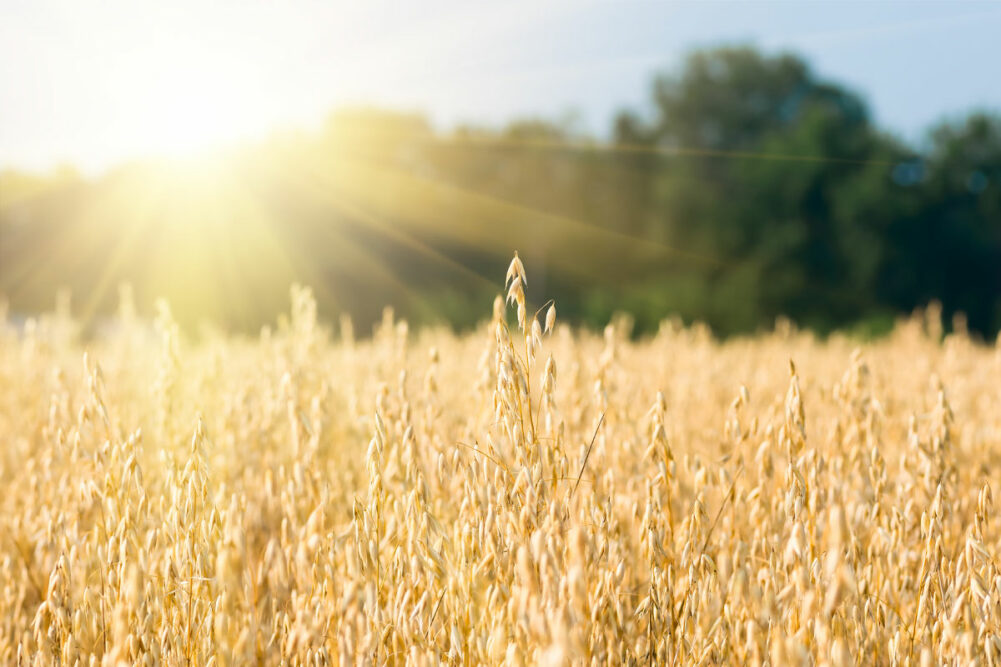KANSAS CITY — Faced with unprecedented demand amidst record low supplies, the trade has exceptionally high expectations for the 2022 oat crop. But a late-seeded North American crop, perplexing government crop status reports and macro-economic effects pressuring cereal prices lower are keeping things somewhat chaotic for the oats market.
“It’s kind of like trying to nail jelly to the wall,” said Randy Strychar, president of Oatinformation.com. “We can’t seem to get a good grasp of what’s going on because there are too many unknowns right now in the oat market. You’ve got grain prices plunging, you’ve got uncertainty of what acreage numbers are, there’s a mixed bag of crop conditions, and we’ve got balance sheets for oats that don’t mirror what we’re seeing in the collapse of oat prices, so we are all over the place right now.”
Demand for oats, driven largely by non-dairy beverage and gluten-free snack industries, outpaced production especially after North American oat growing regions suffered a severe drought last year, which led to depleted supplies that couldn’t keep up with usage. But heavy snowpacks last winter across the western Canadian prairies, where most food grade oats are grown, provided a foundation of much needed moisture and set the stage for an oats market recovery.
The Statistic Canada Acreage Report released July 5 said Canadian farmers had increased their oat planted acres by 16%, to 4 million acres, up from 3.4 million acres in 2021. But the welcomed snowpacks also prevented timely seeding of the oat crop, and Mr. Strychar said the acreage data may be misleading.
“The problem is we had such severe delays in our planting that it’s hard to get a handle on what actually went into the ground, and I’m hard-pressed to find anyone in the oat industry that believes the 16% increase projected by Statistics Canada,” Mr. Strychar said.
The acreage report only shows what farmers intend to plant, but a better estimate of genuine seeding numbers won’t be known until Statistics Canada issues its first yield and production estimates at the end of August.
Mr. Strychar also said he felt the US Department of Agriculture’s oats numbers were deceptive. In its July 12 World Agricultural Supply and Demand Estimates report the USDA raised the 2022 projected yield while lowering estimates for both the area seeded to oats and area expected to be harvested. The USDA in its July 12 Crop Production report forecast US 2022 oats production at 52,613,000 bus, up 32% from the drought-reduced 2021 crop, with an average yield of 66.1 bus per acre, up 8% from 2021.
“The above-average yield for the US crop is weird because they have the same problem as the Canadian crops; they went in late and they’re running into a lot of heat right now,” Mr. Strychar said.
Overall, the North American crop looks pretty good. But Mr. Strychar cautioned that delayed planting often subjects the oat crop to a devastating combination of harsh summer heat during vital crop development periods and an early frost, which might inflict widespread damage before the crop is ready for harvest. Plus, late planting often leads to lower yields.
But Mr. Strychar said a recovery from last year’s record drought was still possible, but it may not be a full recovery.
“We’ve only had the crop in the ground for about 30 days, and it’s a 95-day crop, and we’ve got some critical growth periods coming up,” Mr. Strychar said.
Meanwhile, Mr. Strychar advised buyers to take advantage of falling oat prices. Despite tight supplies and extraordinary demand, oat values tend to follow other cereal crops, which have been under pressure lately from recession fears and diminished export demand due to the strengthening United States dollar.
“I would tell an end user to get some coverage, at least a third of what’s needed right now because these are good prices,” Mr. Strychar said.





